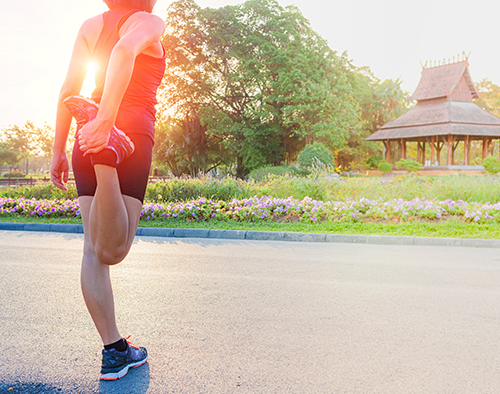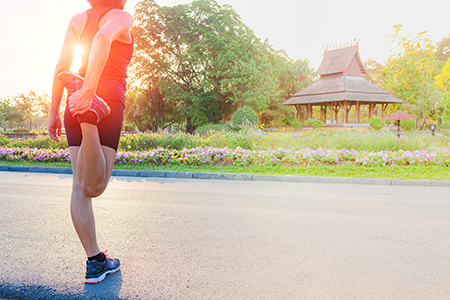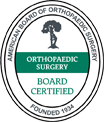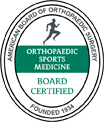
Long-distance running is not just a sport, it's a lifestyle that offers many health benefits. However, it can also result in a knee injury if you aren’t training correctly. Let’s explore some of the causes of knee pain and how you can continue to pursue your passion for running whether you're training for a marathon or simply for the enjoyment of the occasional long-distance run.
Understand the Cause of Your Knee Pain
Knee pain in long-distance running can have various causes, depending on the location, severity, and duration of the pain. Some of the most common causes are:
- Runner's Knee: This term covers several conditions that cause pain around the kneecap, such as patellofemoral pain syndrome, chondromalacia patella, or patellar tendinitis. Runner's knee is usually caused by overuse, misalignment, or weakness of the muscles and structures around the knee. It can also be triggered by running on uneven or hard surfaces, wearing improper shoes, or having poor running form.
- Iliotibial Band Syndrome: This is a condition that results in pain on the outside of the knee, where the iliotibial band (a thick band of tissue that runs from the hip to the shin) rubs against the femur (thigh bone). Iliotibial band syndrome is caused by overuse, especially when running downhill or on banked roads, or tightness, inflammation, or weakness of the iliotibial band or the muscles that attach to it.
- Meniscus Tear: This condition causes pain inside the knee, where the meniscus (a crescent-shaped cartilage that cushions the knee joint) is torn or damaged. Meniscus tears can be acute or chronic. Acute tears are usually caused by a sudden twist or impact to the knee, while chronic tears are caused by wear and tear over time. Meniscus tears can also be associated with other knee injuries, such as ligament sprains or fractures.
Best Practices to Keep Your Knees Healthy and Happy:
- Warm Up and Cool Down: Before and after each run, do some dynamic stretches and exercises to warm up and cool down your muscles, joints, and tendons. This will improve your blood flow, flexibility, and range of motion, and reduce your risk of injury and inflammation.
- Strength and Balance Training: Incorporate strength training and balance exercises into your routine at least twice a week. Focus on the muscles that support your knees, such as your quadriceps, hamstrings, glutes, calves, and core. This will improve your stability, alignment, and shock absorption, and prevent muscle imbalances and compensations.
- Rest and Recover: Listen to your body and give it enough time to rest and recover between runs. Avoid running long distances on consecutive days and take at least one rest day per week. If you feel any pain, swelling, or stiffness in your knees, stop running and apply ice, compression, and elevation. If the pain persists or worsens, consult your doctor or physical therapist.
- Vary Your Workouts: Adjust your running frequency, intensity, and duration according to your fitness level, goals, and symptoms. Avoid increasing your mileage or speed by more than 10% per week and alternate between hard and easy runs. Vary your running surfaces, routes, and terrains, and avoid running on slopes, curves, or uneven grounds. Wear comfortable and supportive shoes that fit your foot type and running style, and replace them every 300 to 500 miles.1
Orthopedic specialist Dr. Milan DiGiulio has extensive experience in the field of sports medicine and would love to help you get back to long-distance running or other sports you love. Call and make an appointment today!
Milan M. DiGiulio, M.D. offers comprehensive Orthopaedic care for you and your entire family, specializing in Sports Medicine and arthroscopic surgery of the shoulder and knee. Dr. DiGiulio performs over 200 arthroscopic shoulder and knee surgeries each year, using the most advanced surgical technology. Dr. DiGiulio is an advocate of non-invasive, non-surgical treatment options such as Physical Therapy and Orthobiologics.









